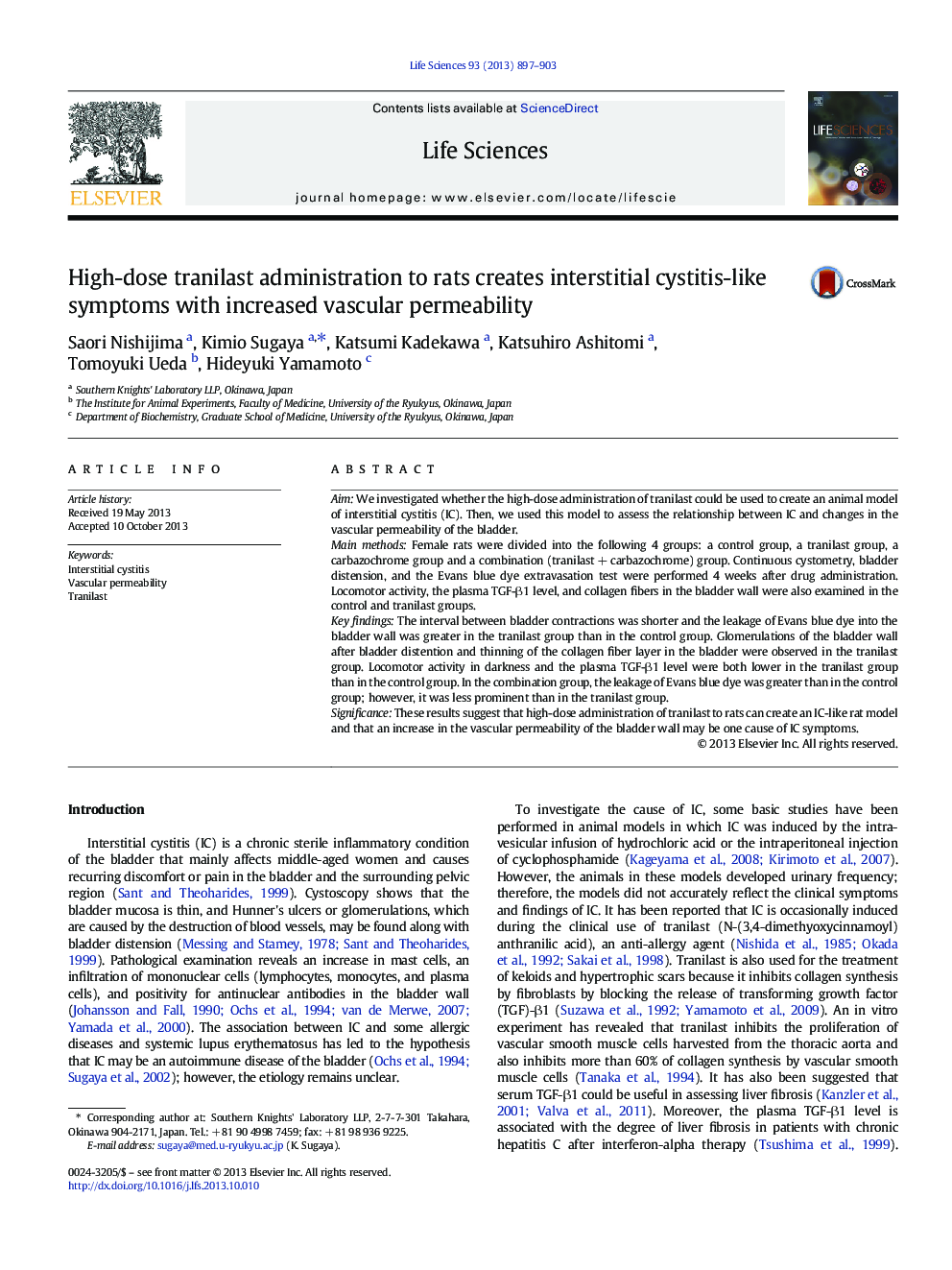| Article ID | Journal | Published Year | Pages | File Type |
|---|---|---|---|---|
| 2551435 | Life Sciences | 2013 | 7 Pages |
AimWe investigated whether the high-dose administration of tranilast could be used to create an animal model of interstitial cystitis (IC). Then, we used this model to assess the relationship between IC and changes in the vascular permeability of the bladder.Main methodsFemale rats were divided into the following 4 groups: a control group, a tranilast group, a carbazochrome group and a combination (tranilast + carbazochrome) group. Continuous cystometry, bladder distension, and the Evans blue dye extravasation test were performed 4 weeks after drug administration. Locomotor activity, the plasma TGF-β1 level, and collagen fibers in the bladder wall were also examined in the control and tranilast groups.Key findingsThe interval between bladder contractions was shorter and the leakage of Evans blue dye into the bladder wall was greater in the tranilast group than in the control group. Glomerulations of the bladder wall after bladder distention and thinning of the collagen fiber layer in the bladder were observed in the tranilast group. Locomotor activity in darkness and the plasma TGF-β1 level were both lower in the tranilast group than in the control group. In the combination group, the leakage of Evans blue dye was greater than in the control group; however, it was less prominent than in the tranilast group.SignificanceThese results suggest that high-dose administration of tranilast to rats can create an IC-like rat model and that an increase in the vascular permeability of the bladder wall may be one cause of IC symptoms.
